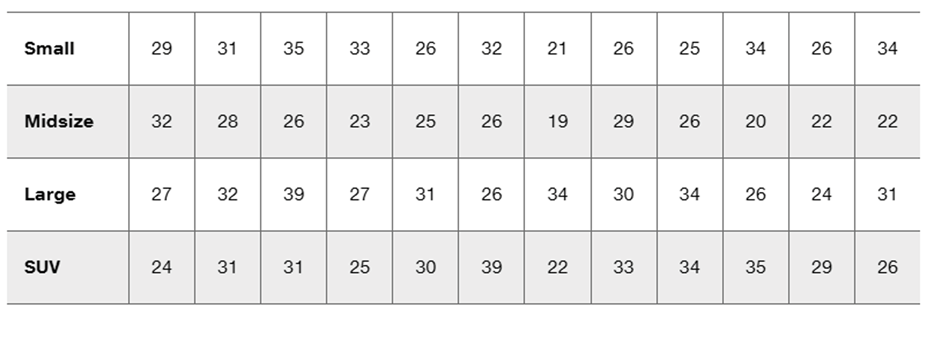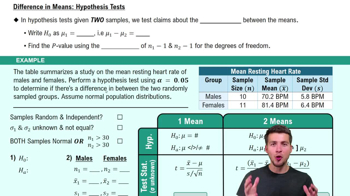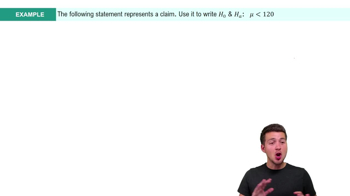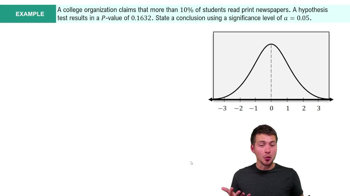Balanced Design Does the table given in Exercise 1 constitute a balanced design? Why or why not?
Table of contents
- 1. Intro to Stats and Collecting Data1h 14m
- 2. Describing Data with Tables and Graphs1h 55m
- 3. Describing Data Numerically2h 5m
- 4. Probability2h 16m
- 5. Binomial Distribution & Discrete Random Variables3h 6m
- 6. Normal Distribution and Continuous Random Variables2h 11m
- 7. Sampling Distributions & Confidence Intervals: Mean3h 23m
- Sampling Distribution of the Sample Mean and Central Limit Theorem19m
- Distribution of Sample Mean - Excel23m
- Introduction to Confidence Intervals15m
- Confidence Intervals for Population Mean1h 18m
- Determining the Minimum Sample Size Required12m
- Finding Probabilities and T Critical Values - Excel28m
- Confidence Intervals for Population Means - Excel25m
- 8. Sampling Distributions & Confidence Intervals: Proportion1h 12m
- 9. Hypothesis Testing for One Sample3h 29m
- 10. Hypothesis Testing for Two Samples4h 50m
- Two Proportions1h 13m
- Two Proportions Hypothesis Test - Excel28m
- Two Means - Unknown, Unequal Variance1h 3m
- Two Means - Unknown Variances Hypothesis Test - Excel12m
- Two Means - Unknown, Equal Variance15m
- Two Means - Unknown, Equal Variances Hypothesis Test - Excel9m
- Two Means - Known Variance12m
- Two Means - Sigma Known Hypothesis Test - Excel21m
- Two Means - Matched Pairs (Dependent Samples)42m
- Matched Pairs Hypothesis Test - Excel12m
- 11. Correlation1h 6m
- 12. Regression1h 50m
- 13. Chi-Square Tests & Goodness of Fit1h 57m
- 14. ANOVA1h 57m
9. Hypothesis Testing for One Sample
Steps in Hypothesis Testing
Problem 12.1.1a
Textbook Question
In Exercises 1–4, use the following listed measured amounts of chest compression (mm) from car crash tests (from Data Set 35 “Car Data” in Appendix B). Also shown are the SPSS results from analysis of variance. Assume that we plan to use a 0.05 significance level to test the claim that the different car sizes have the same mean amount of chest compression.

Anova
a. What characteristic of the data above indicates that we should use one-way analysis of variance?
 Verified step by step guidance
Verified step by step guidance1
Step 1: Identify the groups in the data. The table shows measured amounts of chest compression (mm) for four different car sizes: Small, Midsize, Large, and SUV. Each group represents a distinct category of car size.
Step 2: Recognize the dependent variable. The dependent variable in this case is the measured amount of chest compression (mm), which is a continuous numerical variable.
Step 3: Understand the purpose of one-way ANOVA. One-way analysis of variance (ANOVA) is used to compare the means of more than two groups to determine if there is a statistically significant difference among them. Here, we are testing the claim that the different car sizes have the same mean chest compression.
Step 4: Note the requirement for one-way ANOVA. One-way ANOVA is appropriate when there is one independent variable (car size) with multiple levels (Small, Midsize, Large, SUV) and one dependent variable (chest compression). This data meets the criteria because car size is the independent variable with four levels, and chest compression is the dependent variable.
Step 5: Confirm the assumption of independence. The data appears to be grouped by car size, and the measurements within each group are independent of each other, which is a key assumption for one-way ANOVA.
 Verified video answer for a similar problem:
Verified video answer for a similar problem:This video solution was recommended by our tutors as helpful for the problem above
Video duration:
3mPlay a video:
Was this helpful?
Key Concepts
Here are the essential concepts you must grasp in order to answer the question correctly.
One-Way Analysis of Variance (ANOVA)
One-way ANOVA is a statistical method used to compare the means of three or more independent groups to determine if at least one group mean is significantly different from the others. It assesses the impact of a single categorical independent variable on a continuous dependent variable, making it suitable for experiments with multiple groups, such as different car sizes in this case.
Recommended video:
Guided course

Difference in Means: Hypothesis Tests
Assumptions of ANOVA
ANOVA relies on several key assumptions: the samples must be independent, the data should be normally distributed within each group, and the variances among the groups should be approximately equal (homogeneity of variance). Checking these assumptions is crucial before performing ANOVA to ensure valid results and interpretations.
Recommended video:
Guided course

Step 1: Write Hypotheses Example 1
Significance Level (α)
The significance level, often denoted as alpha (α), is the threshold for determining whether the observed results are statistically significant. In this context, a significance level of 0.05 indicates that there is a 5% risk of concluding that a difference exists when there is none. It is used to decide whether to reject the null hypothesis, which states that all group means are equal.
Recommended video:
Guided course

Step 4: State Conclusion Example 4

 6:21m
6:21mWatch next
Master Step 1: Write Hypotheses with a bite sized video explanation from Patrick
Start learningRelated Videos
Related Practice
Textbook Question
